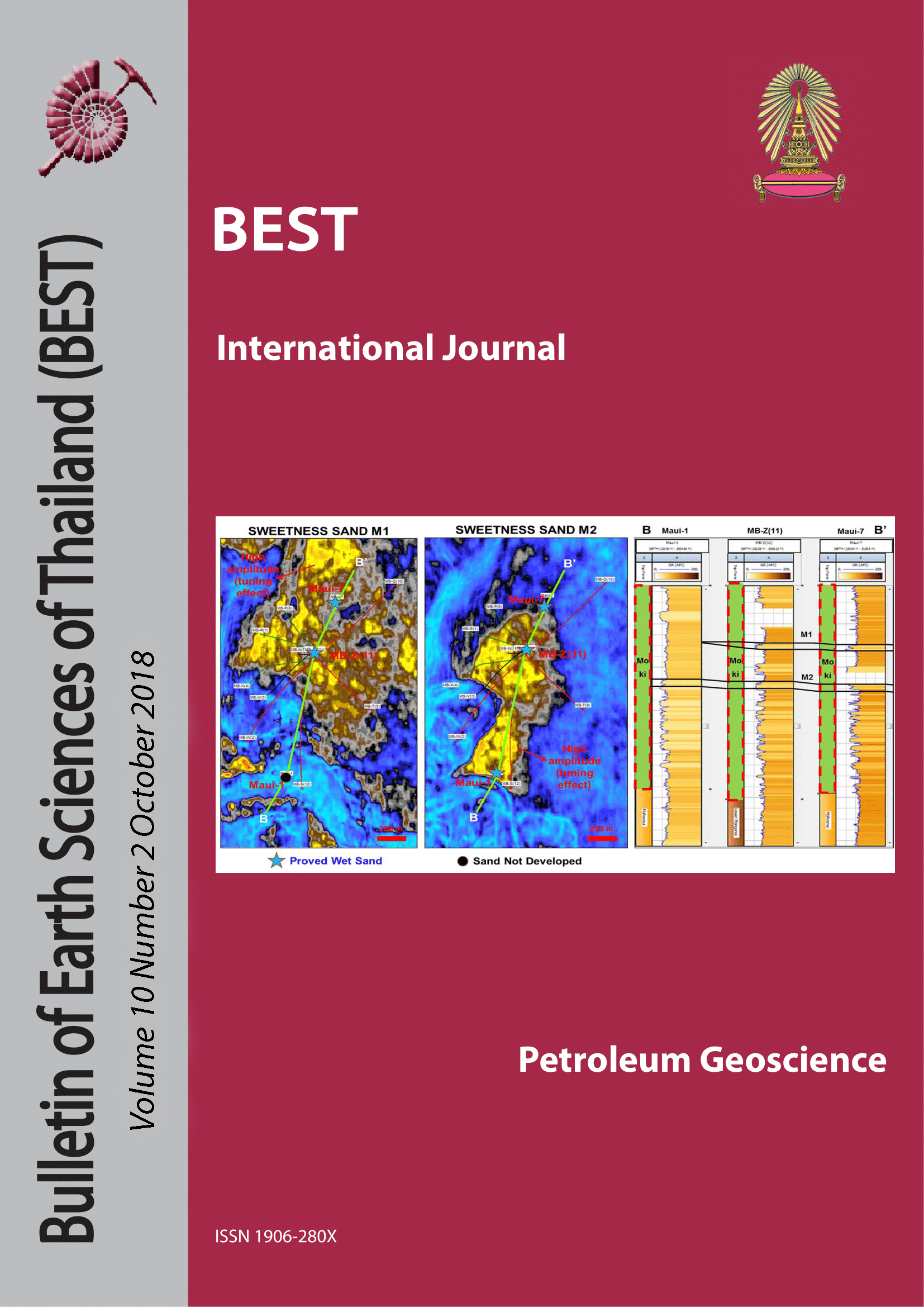3D Facies Modeling of Mangahewa C Sand in Maui B Gas Field, Taranaki Basin, Offshore New Zealand
Main Article Content
Abstract
Building a reservoir model for volumetric calculation is often done based on a single geological concept which is expected to represent the true geological picture. This approach might not capture the full range of uncertainties related to the complexities of geology. The objective of this study is to build an alternative model based on a separate geological concept from the one that is the most likely case and then to compare the net rock volume calculation of these models to see the impact on the final results. The depositional environment was interpreted based on a combination of paleogeography maps, well logs, seismic attributes and core description in Maui B field, Taranaki Basin, offshore New Zealand. The facies models contain eight depositional facies broken down into three groups, namely marginal marine, shallow marine and shelf. The first model has the main reservoir interpreted as upper shoreface sand while the second model assumes that the sand has been deposited in tidal channel systems. The modeling uses Petrel software package which combines object-based and pixel-based modeling termed Sequential Indicator Simulation (SIS) to generate an output. The SIS algorithm was applied to define the background and then objects such as channels and tidal mouth bars were introduced to the previously defined background. The results indicated there is a 42.8% difference in net rock volume between the two models corresponding to 33.2 Bcf of net rock volume or 340 Bcf of gas recoverable reserves. This suggests the geological concept has a great effect on the final volumetric estimation and an alternative model should be constructed in order to capture the range of uncertainties related to net rock volume calculation.
Article Details

This work is licensed under a Creative Commons Attribution-NonCommercial-NoDerivatives 4.0 International License.
Copyright © 2008 Department of Geology, Faculty of Science, Chulalongkorn University. Parts of an article can be photocopied or reproduced without prior written permission from the author(s), but due acknowledgments should be stated or cited accordingly.
References
Bryant Ian D., Carl W.Greenstreet, and Walter R. Voggenreiter, 1995, Integrated 3-D Geological Modeling of the C1 Sands Reservoir, Maui Field, Offshore New Zealand, AAPG Bulletin, V. 79, No. 3, P. 351–374.
Deutsch Clayton V., 2006, A sequential indicator simulation program for categorical variables with point and block data: BlockSIS, Elsevier Computers and Geoscience 32, P.1669-1681.
Higgs K.E., King PR, Raine JI, Sykes R, Browne GH, Crouch EM, Baur JR, 2012, Sequence stratigraphy and controls on reservoir sandstone distribution in an Eocene marginal marine-coastal plain fairway, Taranaki Basin, New Zealand. Mar Pet Geol 32(1):110–137.
King P.R., and Thrasher G.P, 1996, Cretaceous-Cenozoic geology and petroleum systems of the Taranaki Basin, New Zealand, Institute of Geological & Nuclear Sciences Monograph 13.
Ministry of Business, Innovation and Employment, 2014, New Zealand Petroleum Basins, New Zealand Petroleum & Minerals, ISSN (online): 2324-3988.
Reading H.G., 1996, Sedimentary Environments: Processes, Facies and Stratigraphy, 3rd Edition, University of Oxford, UK.
Ringrose P., and Bentley M., 2015, Reservoir Model Design – A Practitioner’s Guide, Springer Science.
Strogen D.P., Kyle J. Bland, Jan R. Baur, and Peter R. King, 2012, Regional Paleogeography and Implications for Petroleum Prospectivity, Taranaki Basin,New Zealand, AAPG Search and Discovery Article #10432.
University of Canterbury Campus, 2006, A Report on Possible Government Interventions to Promote the Sustainable Development of New Zealand’s Ocean Resources, http://www.mfe.govt.nz/node/6974.
Walcott R.I., 1987, Geodetic strain and the deformational history of the North Island of New Zealand during the late Cainozoic, Mathematical and Physical Sciences, A321, 163-181, Royal Society of London, London.


